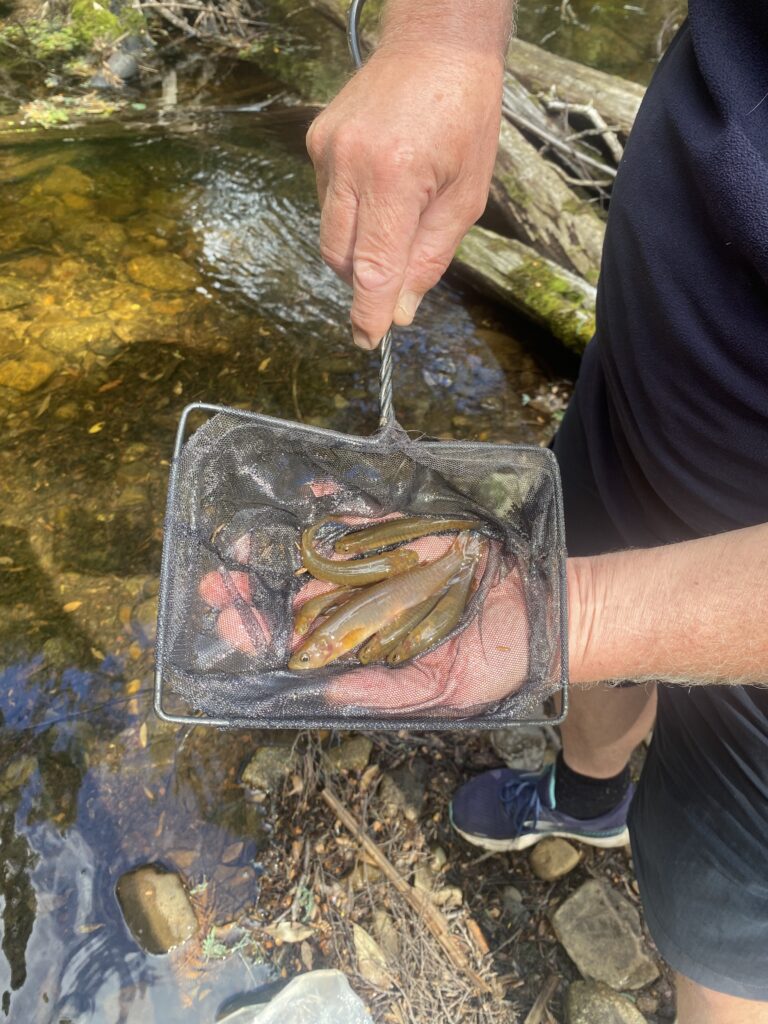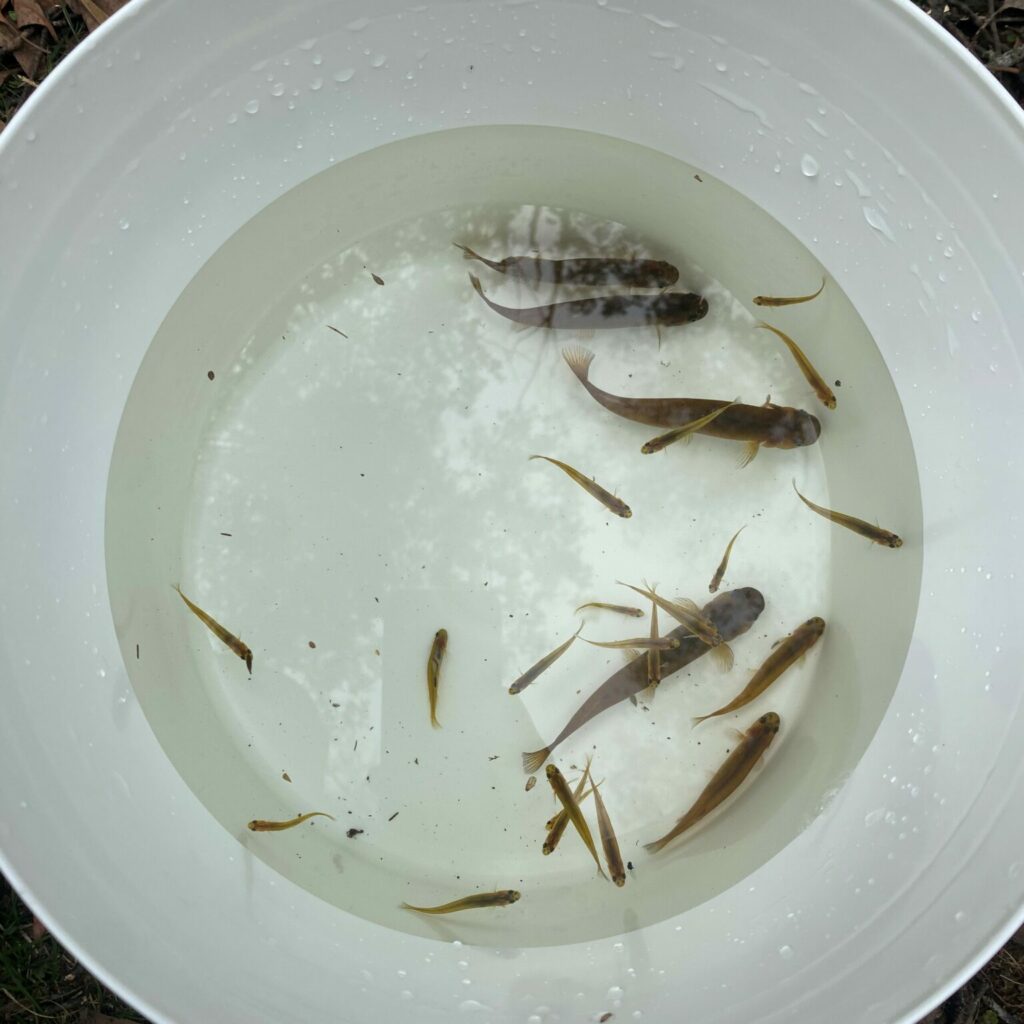As well as being one of Australia’s most at-risk freshwater fish, the Swan Galaxias is also one of our most mysterious. Confined to remote locations in Tasmania’s northeast, Swan Galaxias were only discovered in 1978 and we still know very little about their historic range and evolutionary history.
Today, only a handful of fragmented and fragile populations remain. Under threat from habitat degradation, declining water quality and predation from invasive species including Brown Trout and Redfin Perch, the Swan Galaxias is endangered and facing extinction. In the sites where they can still be found, they typically remain in the shallow headwater of streams that are inaccessible to introduced fish species. While this gives them some protection from predators, it also makes them more susceptible to climate extremes; five separate populations have been wiped out by droughts and floods since the early 1990s.
One way to help improve their chances of survival is to move a select number of fish from their current sites to new areas where they will be better protected from climate extremes and invasive predators. Over the last few months, NRM South has been working with Tasmania’s Inland Fisheries Service and CSIRO to identify suitable new translocation sites and, over the past couple of weeks, 120 fish from four separate populations were moved to new locations. The source populations were carefully chosen, with guidance from geneticists from CSIRO and UTAS, to ensure a good genetic variation was maintained in the two new populations.
One way to help improve their chances of survival is to move a select number of fish from their current sites to new areas where they will be better protected from climate extremes and invasive predators. Over the last few months, NRM South has been working with Tasmania’s Inland Fisheries Service and CSIRO to identify suitable new translocation sites and, over the past couple of weeks, 120 fish from four separate populations were moved to new locations. The source populations were carefully chosen, with guidance from geneticists from CSIRO and UTAS, to ensure a good genetic variation was maintained in the two new populations.
These translocations are the culmination of a series of actions that have formed part of NRM South’s Recovery Actions for Swan Galaxias project, funded by the Australian Government’s Environmental Restoration Fund. Following these translocations this funding will allow Inland Fisheries Service to increase their monitoring efforts to ensure these populations survive and flourish.






